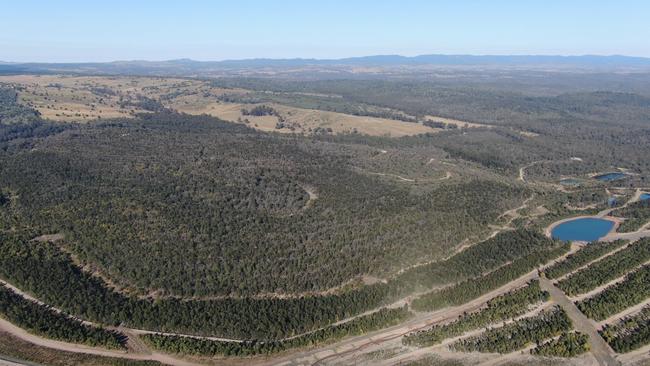Meandu Mine: Stanwell reveals plans to turn post-mining land over to grazing, forestry
More than 150 hectares of former mining land at Meandu has been approved as “rehabilitated” native bushland, however Stanwell has revealed groundbreaking plans to soon use similar land for a very different purpose.
South Burnett
Don't miss out on the headlines from South Burnett. Followed categories will be added to My News.
More than 15o hectares of former mining land at the South Burnett’s Meandu Mine has been approved by the State Government to be “rehabilitated” back to native bushland.
The recent approval by the Department of Environment and Science marks the largest native vegetation rehabilitation area approved in a single application in Queensland, however Stanwell has indicated that future post-mining land may be used for grazing or plantation forestry.
Stanwell Chief Executive Officer Michael O’Rourke said the newly certified area forms part of nearly 600 hectares, which has been rehabilitated at Meandu Mine since 1989, and was an essential part of responsible mining.

The area is home to native species including wallabies, possums, bandicoots, birds, bats, reptiles, invertebrates and other marsupial species.
The energy giant’s environmental team worked with regulators to restore a native ecosystem made up of species best suited to Meandu’s climate and conditions, planting a rehabilitation seed mix made up of 25 native tree, shrub and ground cover species, and 10 native grass species.
The team at Meandu Mine says it has taken between seven and 23 years, since the time of seeding, to develop a matured rehabilitated site that is safe, stable, and sustainable.

Until recently Stanwell only planned to use the rehabilitated areas as a native ecosystem, however Stanwell General Manager Mining Jacob Orbell said company was also exploring the viability of other post-mining uses following feedback from local landholders.
“Grazing and plantation forestry could potentially form some parts of our future rehabilitation at the site, as they provide local opportunities for commercial operation of the land after mining,” he said.
“Feedback from our community has also led to the consideration of retaining some access tracks and water storage infrastructure on site for post-mining land use.
“Our people work and live in the communities in which we operate. They care about ensuring a high standard of rehabilitation is delivered so that a proud legacy will endure when the time comes for life after mining.”





